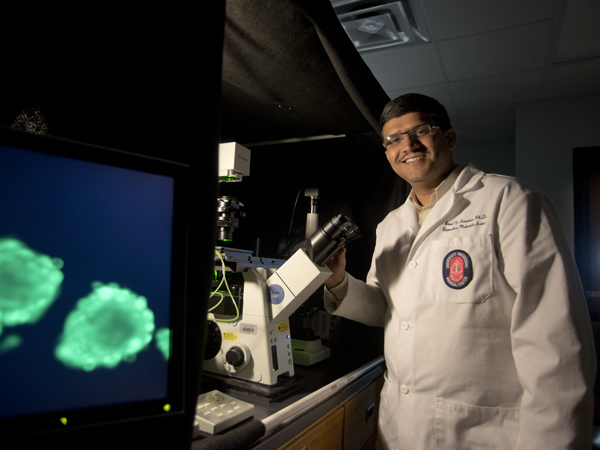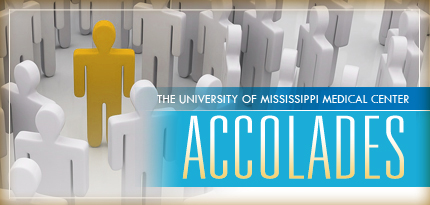|
In Dr. Amol Janorkar's lab, the work is about better living through chemistry, biology, engineering and materials science. Janorkar, an associate professor of biomedical materials science, studies tissue engineering. The goal is to use cells, materials and biologics to construct new ways to study and treat disease. Tissue engineering is much more than the “ Vacanti mouse,” a rodent that made news headlines for the ear-shaped cartilage on its back. Rather, the goals are practical and noble: revitalizing livers, replacing cartilage and bone, and new skin for burn victims. “That is the promise of tissue engineering… but solid organs, like livers and hearts, are farther down the road” and years from clinical use, Janorkar said. However, the basic science research is happening now in his lab at UMMC and at universities across the country. One of Janorkar's projects, recently funded by a $1.4 million grant from the National Institutes of Health, takes on part of health care's largest challenge. He is developing and studying 3-dimensional models of human adipose tissue, or fat. The model binds fat cells in a spheroid, or almost round, shape using elastin-like polypeptide and polyelectrolytes. A common protein, elastin is a component of mammalian fat tissue, making the engineered ELP a relevant tool to help hold the cells together, Janorkar said. In a previous study, Janorkar “fed” the cells fatty acids to study how adipose grows and proliferates. On the current grant, he will add metabolic stressors like TNF-α to determine how they affect adipose development. “By learning how cells become fatty, we can begin to answer the question, 'How can we make these cells lean again?'” he said. These spheroids aren't visible to the naked eye, but Janorkar hopes they could become an important part of the drug development process. “When drugs are first tested in vitro, scientists use 2-dimensional cell cultures,” Janorkar said. The cells grow as a single layer on a Petri dish. However, fat is not flat. Neither is any other part of the human body.
|


























